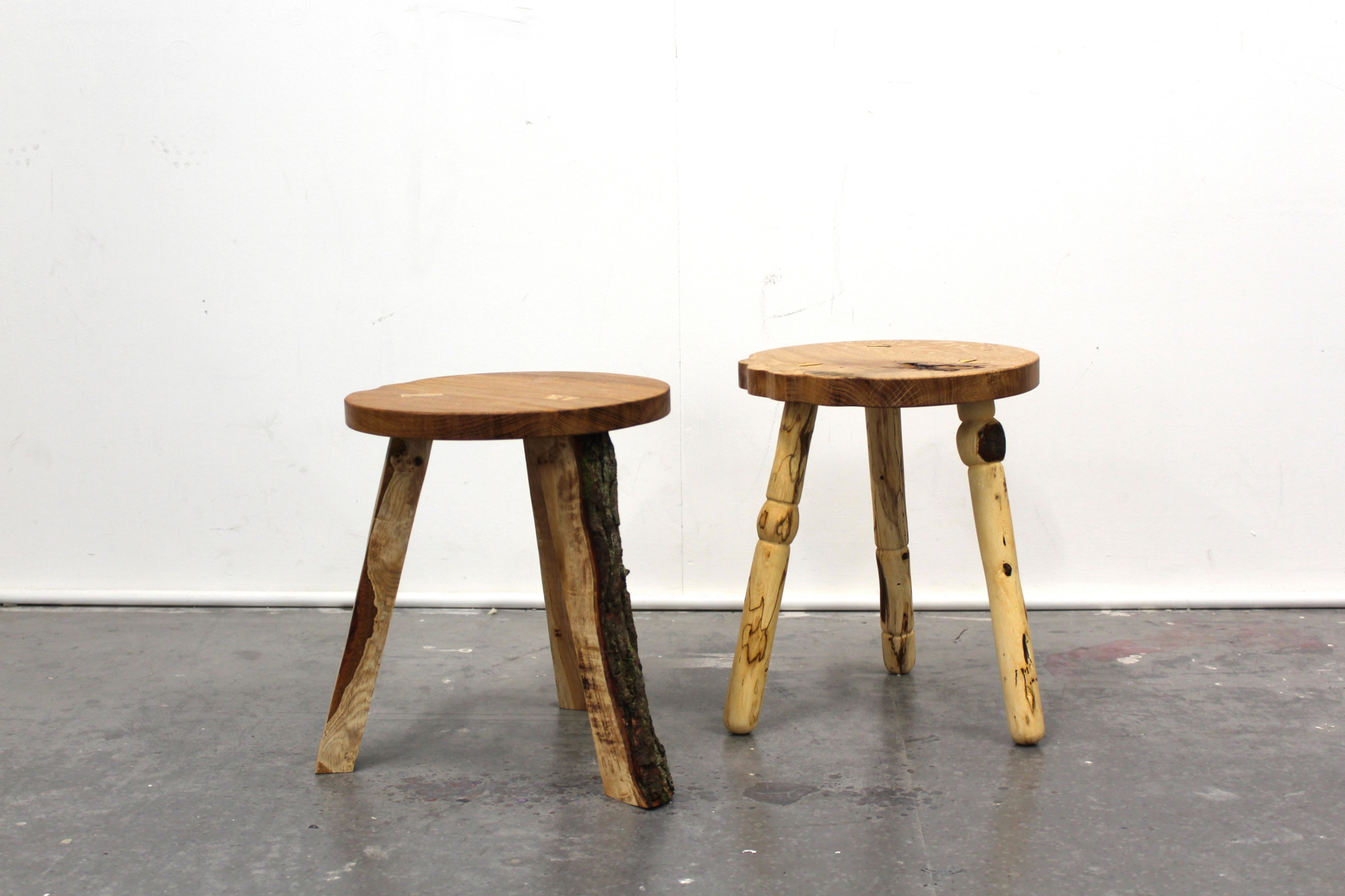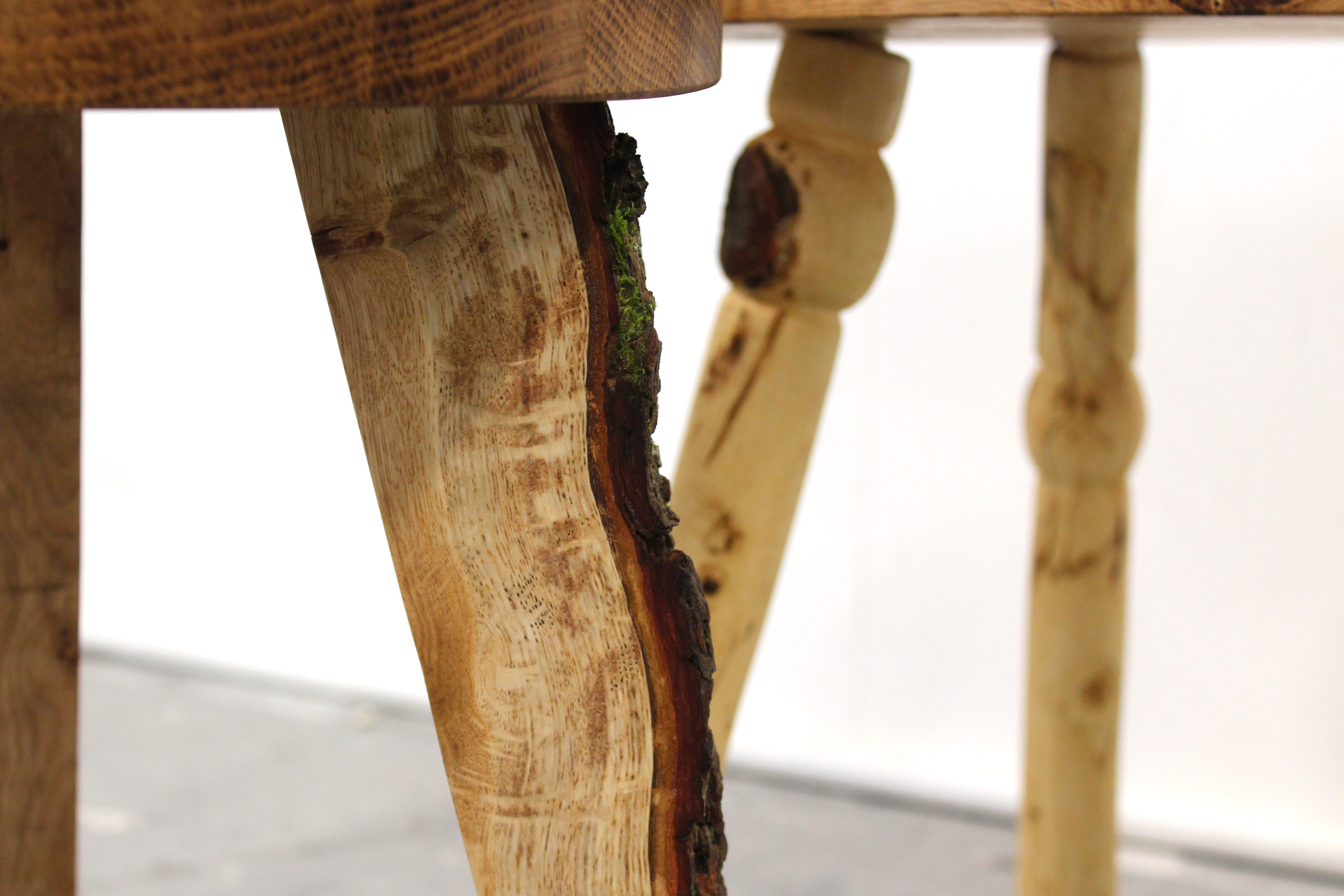Splits & Spills
Category: Furniture
Natural Materials The ‘Nature’s Gift’ series is a collection of bespoke stools aimed at raising questions about whether we should embrace the gradual aging of materials, challenging the notion of perfection. In response to the project brief, the stools aimed to communicate the values in using raw material through locally sourced Oak which was influenced by traditional English furniture. Materials including Hornbeam were also sourced from a local woodland (once part of the Great North Wood) to explore how foraging could be implemented as a manufacturing strategy through using what nature has provided. This involved exploring the process of woodturning on the lathe to celebrate traditional styles and natural defects. Traditional joinery also played a major role in the seats design to be structurally secure. This was also informed by the limitations of the wood workshop which enabled the use of machinery such as the Bandsaw to rapidly fabricate components. The craftsmanship through imperfect pattern work was also introduced to create a new language that reflected the honest structure of the Oak tree bringing forward a unique identity to branding and design. The design and making process was also influenced by our understanding of imperfection and the desire to achieve the 'ideal' body which provoked an exploration into how devalued materials could be utilized. This was a success as I was able to establish a language whilst the stools expressed their own unique identities with each stool being made similar. From what began as an exploration into the relationship between modern and contemporary processes (specifically 3D printing and wood turning), designs were informed by research into different philosophies including the Wabi Sabi Philosophy which championed objects in their raw state. This led to an in-depth study of how wood can be manipulated to preserve its imperfect beauty which made it unique. Additive manufacturing was later abandoned as it did not reflect key strengths and values set within the project aim regarding sustainability. It was later decided that woodturning supported by historical research expressed a desire to achieve perfection as the process required skill in achieving symmetrical components. In contrast, rawness was also achieved through using machine tools to process an Oak log through cutting with the Bandsaw. The simplicity during the making process later informed how details such as burn marks could add to the narrative of the piece in a contemporary way. Sustainability Based on research into traditional materials, local Oak and Hornbeam from a local woodland enabled the outcome to address wider issues including how objects could minimize the need for imported material. This was aimed at exploring how foraging could be used to champion the cultural values in relation to traditional processes such as woodturning, whilst celebrating honesty and provenance. The design has also embraced locality through its use of English White Oak off-cut sourced from a local timber supplier which celebrates the narrative of the piece through subverting waste into meaningful design. Using locally foraged greenwood has also played a major role in the production of the series where we’ve looked to minimise waste through sourcing the most appropriate size material according to the volume of production. For example, the use of foraged Oak and Hornbeam are 100% biodegradable or can be reused for other purposes whilst we would implement a made to order strategy. A central topic during the design’s development was also the journey of the product and how the object will age. Will it age and decline, or will it gradually mature? What impact will the environment have on the outcome? The construction of the stools was successful due to the use of jigs which enabled the joints to be produced rapidly. Another core value during the development of the manifesto was how the furniture could be simple and functional, so they could also be scalable. This was addressed through using modern processes including Bandsaw cutting (in the second stool) which enabled components to be made more efficiently. A challenge was the construction of the seat according to the required measurements. This was addressed through using an edge-to-edge joint which could be eliminated entirely through using a single sheet of timber. Due to time restrictions, research into the possibility of using more efficient methods such as a CNC machine to achieve the curved design may also be a suitable option if piece was selected for development.
Download PDF 1


 Copy URL
Copy URL
 Login to Like
Login to Like 